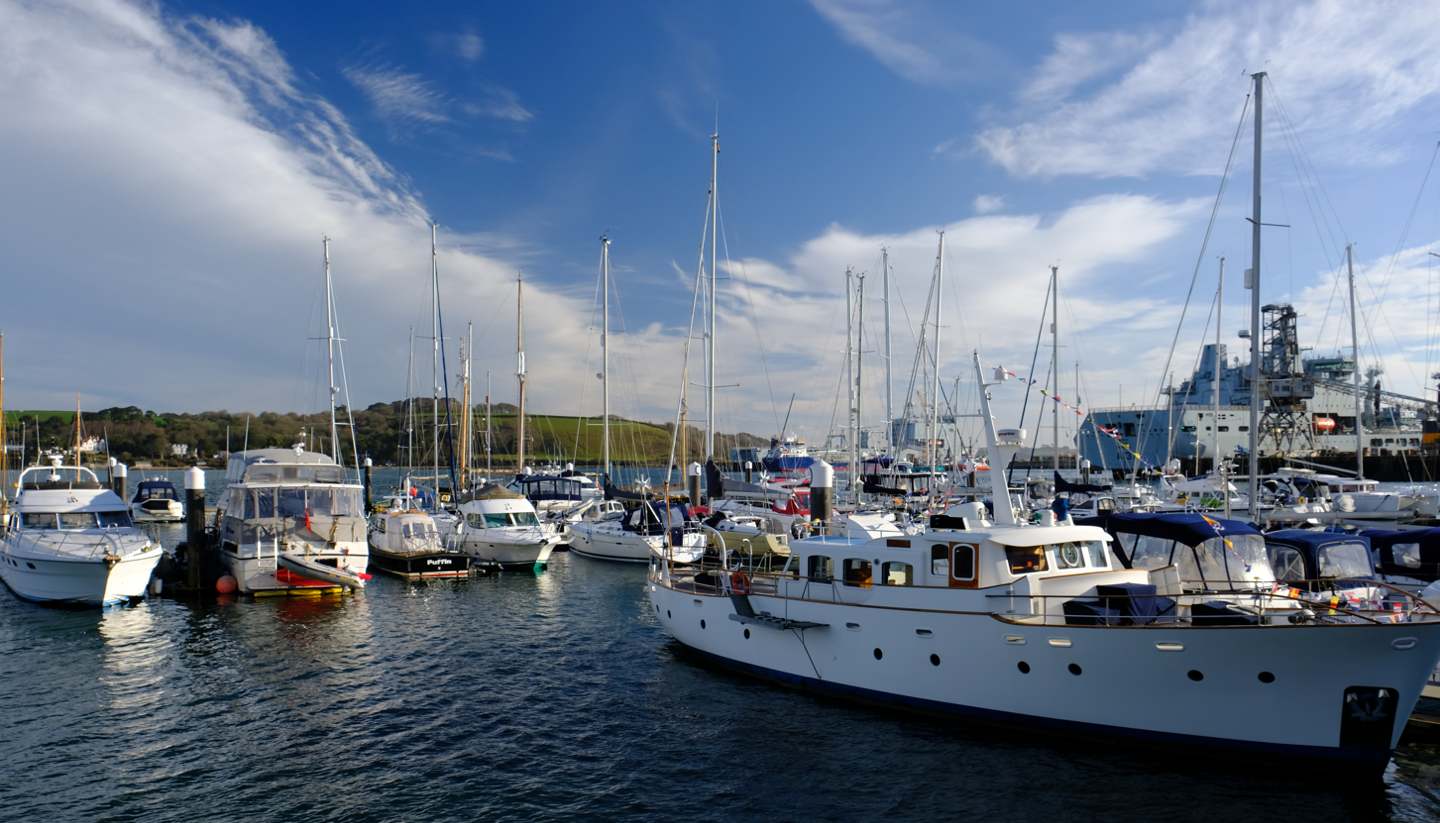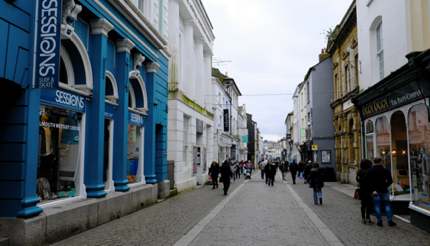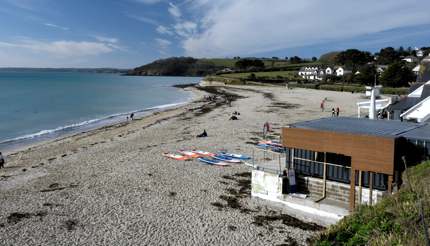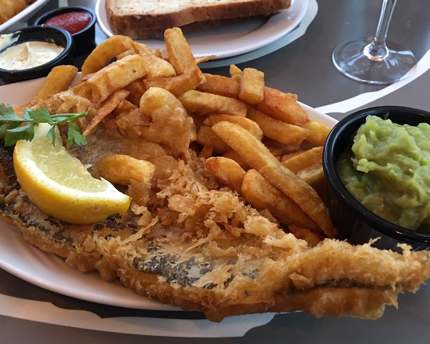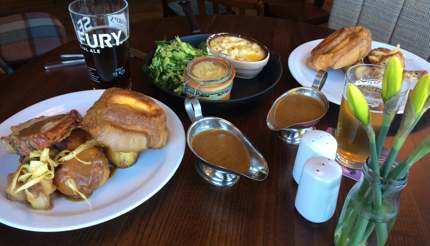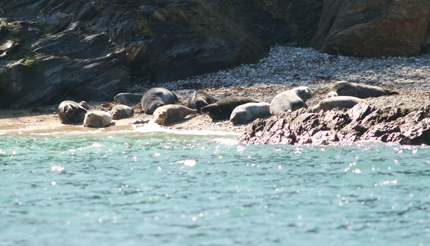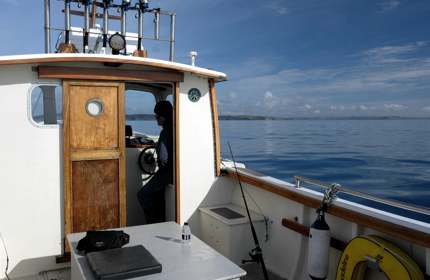Soft green land, bright blue sea and abundant marine wildlife are the very essences of Falmouth, a hidden gem on Cornwall’s coastline, writes Vivien Yap
“My goodness, but isn’t this beautiful?” I mutter to myself as I step out of my car and take a deep breath of the fresh sea air. Fuelled by plenty of oxygen from the ion-rich air, I feel like I’ve just unearthed a secret and standing on the brink of something awesome.
No kitsch. No man-made subculture that pretends to be cool. No amusement arcades cluttering the best waterfront locations either. Don’t you dare ask for noisy fairground rides with flashing LED lights that make your ears ring and leave spots before your eyes.
None of that. But don’t think for a minute that there isn’t something for all ages in Falmouth – there most certainly is. This is a destination that will remind you what a seaside town should be like.
Falmouth is pleasing, idyllic, charming, and has an upbeat vibe. It pulls in happy, nature-loving crowds who come to walk the coastal path or put on waterproofs and head out on the wildlife-abundant water.
The high street is well-maintained, clean and refreshingly, not cluttered with tourist garb. Shops are prosperous and busy. It has a butcher, a fishmonger, independent shops, traditional pubs and many cosy cafés selling a myriad of Cornish pasties. What I find hugely interesting is Trago, an independent shop that sells everything under its roof. I could spend hours looking at garden gnomes, baking tins, pipe wrenches and a wealth of other interesting knick-knacks.
Outside on the street, old friends greet each other with enthusiasm. Kayakers in wetsuits exchange information with stand-up paddlers. A young man talks about his allotment, another person casts her eye upward to the sky and says something about painting the local wildlife sanctuary the next day. This is a town whose residents really care about the place they live in. Perhaps this explains why Falmouth won Britain’s Best Coastal Community in 2016 in the Great British High Street Awards.
Wonderful beaches
In the south of town, Gyllyngvase is a crescent of butterscotch sand with rippling waves that glisten in the sun. This blue-flag beach is popular with swimmers and stand-up paddlers; it also has seasonal lifeguards, and so is a great beach for small children.
About 1.5 miles from the town centre, Swanpool is a wide stretch of sand and shingle beach. Apart from being a great place to launch your kayak, many visitors go to Swanpool with one primary purpose – ice cream. Selling Cornish ice cream covered in sweets including liquorice all sorts and malted balls, the beach café is a local institution for a sweet treat.
There are also many secluded coves around Falmouth which are only accessible by boat, but then there are numerous boat hire operators too.
Where to stay
Cutty Sark (4 Grove Place; cuttysarkfalmouth.co.uk) is an elegant Georgian townhouse with gorgeous views of the estuary. Don’t expect a soulless B&B; the new owners (Mark and Hanna) have done an exceptional job of turning a guest house with a once questionable reputation into an inviting place suitable for ages. Check into rooms 2, 3, 8 or 9 – set yourself by the large bay window overlooking the estuary with a cup of tea. It’s a great spot to watch the boats bob about in the harbour, framed by the rising sun illuminating the sky with a blaze of colours. Seagulls swooping low over the water are just an added bonus.
The location of Cutty Sark is also ideal. When the sun is out, lace up your shoes and walk to half a mile south to Gyllyngvase beach. If the weather turns, walk 100 yards across the car park and visit the National Maritime Museum of Cornwall. Alternatively, walk left to the high street and seek refuge at a pub (or two).
Where to eat
Harbour Lights (Arwenack Street; harbourlights.co.uk) serves up award-winning fish and chips. If you have been eating fish and chips your entire life but haven’t seen the fish separating into satisfying flakes that melt in your mouth – you haven’t tried the real deal. Ask your server about sustainably caught fish and you’ll find out just how well the locals are tuned into their environment and where the food comes from. To feel like a true local, order the Famous Five, a timeless classic of cod or haddock, with chips, mushy peas, buttered bread and unlimited tea.
Cutty Sark (4 Grove Place; cuttysarkfalmouth.co.uk) serves up excellent meals three times a day too. I am partial to their Egg Florentine and Sunday Roast.
What to do
Sea safari
Don’t miss the opportunity to connect with coastal wildlife and let the avid enthusiasm of Captain Leeves of AK Wildlife Cruises (tel: 01326 753 389; akwildlifecruises.co.uk) rub off on you. Passionate about nature and has the eyes of a hawk (or maybe the local peregrine falcons), Captain Leeves expertly guides you around the estuary and also out to the open blue sea searching for dolphins, porpoises, sharks, whales and sun-bathing seals. This man is a fantastic mine of information about the area; he is great with kids and families too.
Mackerel fishing trip
Did you know that a string of feathers is used to catch mackerels? Join skipper James Brown, a commercial fisherman turned fishing guide, for a relaxing fishing trip and a chance to bring home dinner. Bobbing quietly on the water also means the chance the spot curious dolphins who occasionally drop by, rounding off the experience nicely. Contact James on 07891 300 078 or fishandtripstmawes.co.uk.
Pendennis Castle
Built by Henry VIII between 1540 and 1542, this circular castle was once an important part of the national coast defence policy. Managed by the English Heritage, it houses a fine exhibition and offers free guided tours to visitors.
Getting there
Driving: From London, head west on M4 towards Bristol, then head south on M5, before taking A30, A39 and follow the sign for Falmouth. The journey is about 6 hours.
Train: GWR (Great Western Railway) runs regular services to Truro, where you can catch a local train to Falmouth. The journey is about 5 hours 30 minutes.
Before you go, check out:
